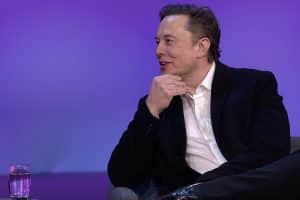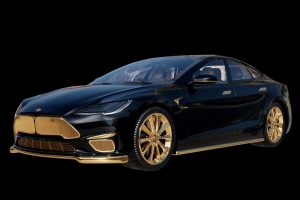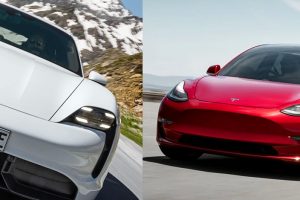When Tesla revoked access to its self-driving beta test for some drivers, a number of people understood what was happening behind the scenes: consumer data indicated that some driving practices were not consistent with the pilot program’s objectives. Tesla’s vehicles are more tech than automobiles, at least in the traditional sense. They integrate hardware and software, much like Apple, and the technological capabilities sometimes supersede human input. The Tesla/Apple experience has a whole lot of similarities, in fact.
Last week, Apple launched its first iMac desktop and iPad Pro line with M1, and early reviews applauded the models for unmatched speeds, long-lasting batteries, and better graphics, all due in part to the processor. CNN says that the M1 chip is so efficient that Apple now has a big advantage over its competitors. Yet Apple didn’t encourage many user previews of the M1 products, reportedly hesitant to have users manipulate its closed-source environments or mess with its meticulous designs.
Then again, the brand loyalty that both companies inspire is so powerful that Apple and Tesla owners are each immersed in collective, linked communities that create a gestalt of devoted togetherness. Moving ahead with design and innovation without Tesla/Apple user input is occasionally okay to these fans — as long as the end products are state-of-the-technological-art.
The Tesla/ Apple Connection: An iPhone on Wheels?
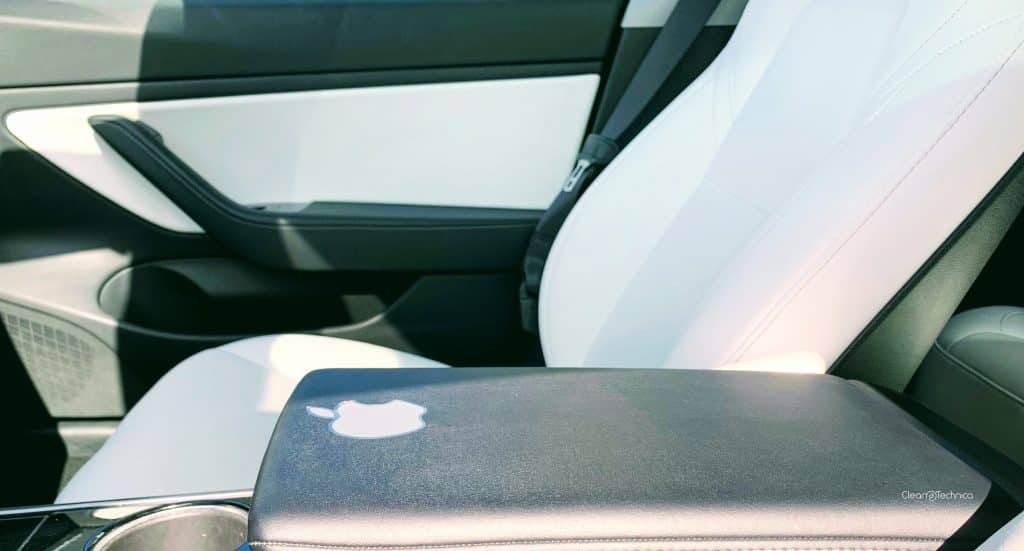
Morgan Stanley tech stock analyst Katy Huberty, who is often bullish on Apple, said in a 2020 investor note that analysts tend to “view Tesla in a way they viewed Apple 20 years ago, a company that thinks differently, that is incredibly innovative in a category that needs a spurt of innovation. That creates investor interest.”
When Apple introduced cell phones without keyboards, the new look subverted people’s expectation of what was normal. Tesla electric cars are designed similarly — a minimalist pattern, with the removal of redundancies. Add in oversized touchscreens, a vast proprietary fast charging network, and industry-leading performance, and Tesla made the dream of electrification a reality.
From 2004–2018, Apple’s growth was fueled by the release of the iPhone, iPad, Apple Watch, and App Store — each generating sales on par with a Fortune 500 company. ARK Invest notes that Apple’s unique strategy of vertical integration and consumer focus allowed it to build superior products, charge higher prices, and command fanatical customer loyalty.
Tesla hired managers who brought members of their teams from Apple, importing their design language and culture. Tesla’s head of vehicle and mobile user interface design was a senior art director at Apple, and former Apple employee George Blankenship led Tesla’s retail strategy in which shopping centers showcased the revolutionary all-electric vehicles — similar to Apple’s upscale, experience-focused store model.
The Tesla/Apple companies manage and control the whole customer experience throughout the sales cycle. They both don’t rely on dealers or franchises but use the allure of their products to inspire word-of-mouth and media interest (much like this article).
An Apple in your Pocket, A Fully Electric Tesla Trendsetter in your Garage
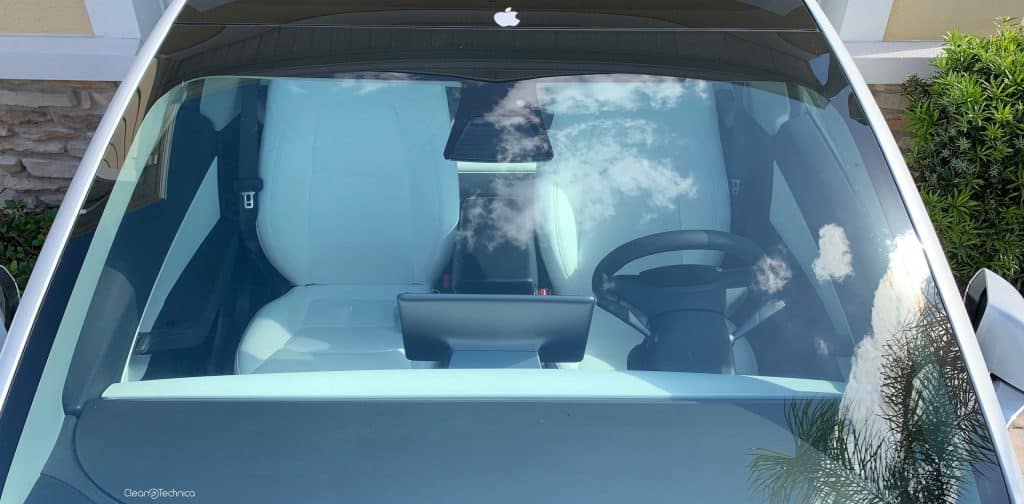
Tesla electric cars and Apple electronics are marketed as premium products in their fields, with the allure of high-tech innovation the rationale for both companies’ industry-leading product lines and generally higher purchase prices.
Teslas still go much farther on a single charge than their competitors. Apple, like Tesla, integrated software with hardware so that the competition was left blindsided. Both Tesla and Apple have released open-source software to competitors.
That also translates to the company’s leadership. Musk, who crowned himself “Technoking” of Tesla in an SEC filing, resembles Apple co-founder Steve Jobs in his fascination with and emphasis on all things tech. From car repairs to software updates, Tesla relies on technology. Need a performance update? Tesla’s over-the-air updates will take care of that. Tesla also owns and operates manufacturing facilities.
Not a digital native consumer? Don’t worry! Both companies will offer you a series of help steps to make their new technologies seem quite friendly, even for the non-techie in your household.
Both companies create products laced with proprietary technology. For Tesla, it’s the wide-ranging fast-charging network, consisting of more than 25,000 Superchargers. Sometimes being different has a cost, of course. Apple‘s focus on hardware and software integration has occasionally resulted in higher prices, limited compatibility, and little customization, according to the Washington Post.
Tesla’s refresh for the Model S this year includes a yoke-style steering wheel. The half-moon shape is less ergonomics than racing, more futuristic than practical. Lots of folks will adore it; a few will complain bitterly.
The Tesla/Apple Right to Privacy vs. Data Collection for Brand Improvement
Much like Musk, Apple CEO Steve Jobs was known for his disdain for market research, instead insisting that Apple would lead customers toward innovations that would best suit them. Today there’s no headphone jack on its smartphones, pushing consumers toward locating their own connect accessories.
Big Brother isn’t finding much success in unlocking either Tesla’s systems when a crash occurs or Apple devices when an individual comes under criminal investigation. Each Tesla sold joins a fleet of vehicles in constant communication with its manufacturer.
It has been argued the most valuable asset that Tesla’s base generates is data — Tesla’s advanced sensor suite installed across hundreds of thousands vehicles gathers billions of miles of data per year. The scale of its fleet and data gathering may give Tesla the necessary foundation to become the first company to deploy fully autonomous driving at scale.
When Apple was preparing to store the personal data of its Chinese customers on computer servers run by a state-owned Chinese firm, Tim Cook, Apple’s chief executive, insisted the data was safe. Apple abandoned the encryption technology it used elsewhere after China would not allow it.
Instead, according to the New York Times, Chinese state employees physically manage the computers. And the digital keys that unlock information on those computers are stored in the data centers they’re meant to secure. Cook has been on a “charm offensive in China, making frequent, statesmanlike visits and meeting with top leaders.”
The Apple relationship with China is rife with compromises. So, too, is the Tesla/China arrangement a series of concessions. China hopes to use electrification as a path to be at the top of the global auto industry, and its companies and engineers need the technology and experience they can gain by working with the world’s EV trendsetter, Tesla. But last month, China published draft rules to ensure the security of data that is generated by smart cars. After reports that China’s military banned Teslas from its facilities, data collected from Tesla electric cars in China indicated that the data is actually stored in China.
But the story doesn’t end there. Tesla is developing a platform that will allow its customers to access the data that their vehicles generate. Your car provides data of interest to insurance companies, governmental agencies, and Tesla itself. It will be a huge and important change when users have access to the data that your car — your possession, paid for by your hard-earned money — generates.


